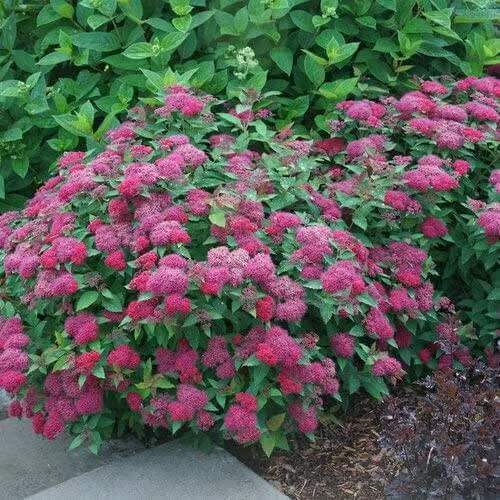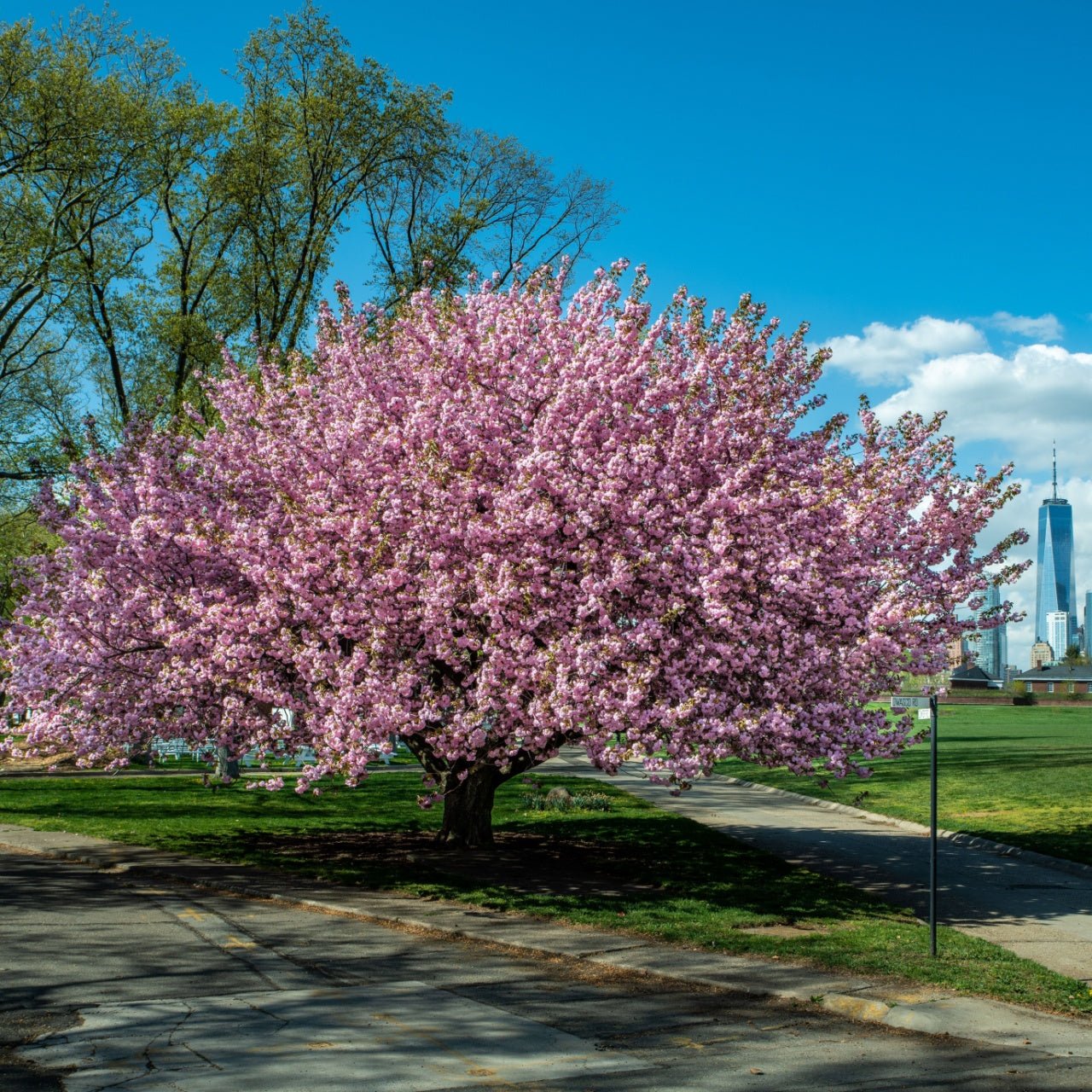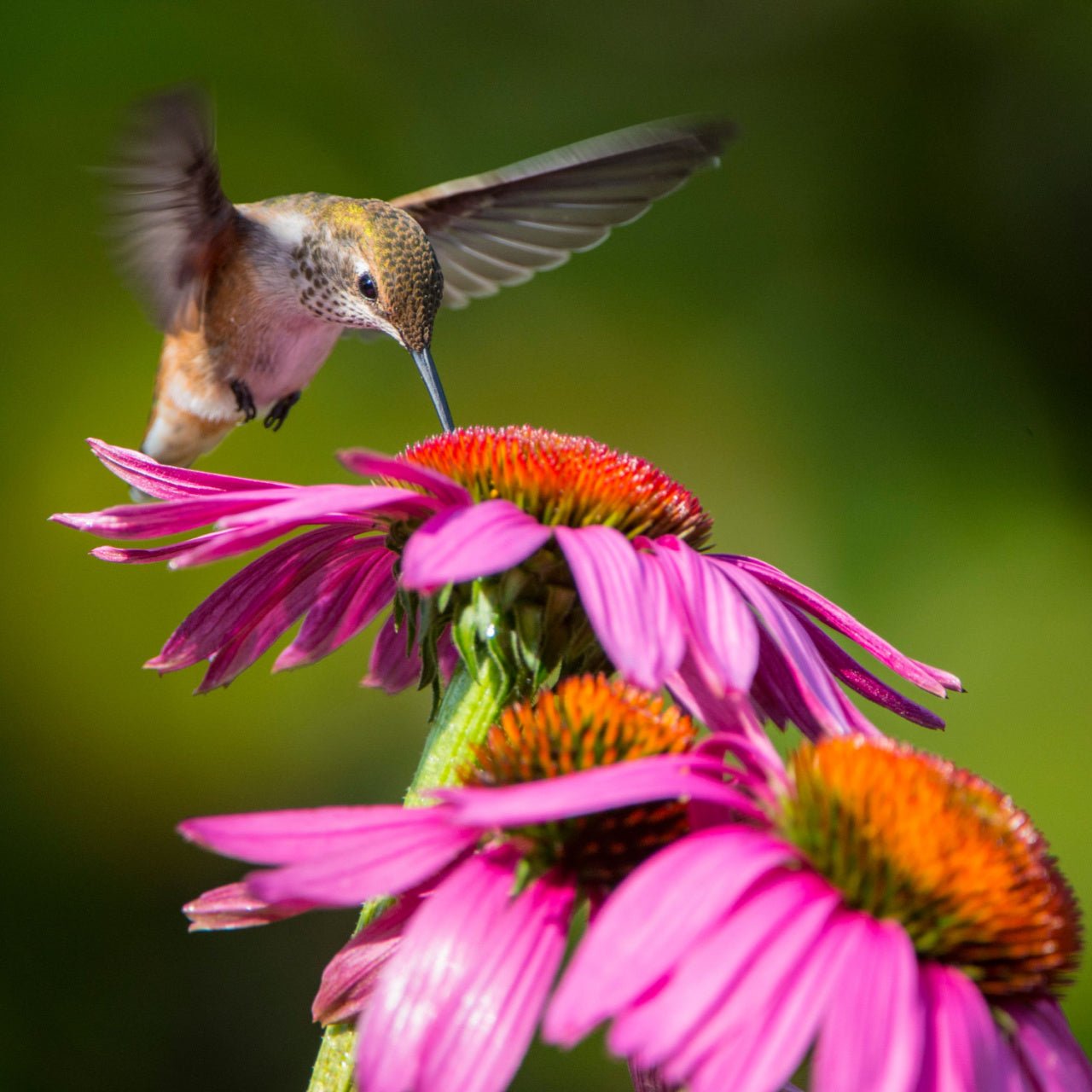



Spiraea Japonica
Low maintenance, easy to grow
Attracts butterflies and pollinators
Versatile in various landscape designs
Thrives in
ZONE 4ZONE 5ZONE 6ZONE 7ZONE 8This plant ships:
November 20251 Year Guarantee on all plants
Spiraea Japonica - Japanese Spirea
Spiraea Japonica (Japanese Spirea) is a deciduous shrub native to China and Japan where it can be found growing on woodland borders, slopes, rocky hillsides, and riverbanks. It is a fast-growing shrub that is well known and desired across North American gardens.
It is a mounded shrub creating a dense network of wiry stems. Sharply toothed and ovate in shape, the foliage of this shrub is lush and bright green. In the spring, flowers emerge in colors of white, light pink and bright pink. It flowers profusely, with flower clusters almost completely covering the foliage, creating gentle, pinky cushion-like mounds in the garden. Pollinators are particularly attracted to this impressive flowering.
Plant Details - Spiraea Japonica
Family: Rosaceae
Hardiness Zones: 4 - 9
Light Requirement: Full sun for best flowering and foliage color
Water Needs: Moderate
Height: 2 - 6 ft
Spread: 2 - 5 ft
Growth Rate: Fast
Bloom Time: Late spring to summer
Flower Color: Pink, rose, red, or white, depending on the variety
Wildlife Value: Attracts bees, butterflies, and other pollinators
Plant as a border plant or as a part of a low rising hedge. Choose a location in which it has room to expand and do not plant with slow growing shrubs as it will overtake them with its fast growth habit. It also contributes beautifully to a mixed hedge but take note to prune regularly to keep the plant tidy and contained.
In the eastern United States, Spiraea Japonica easily escapes garden settings and naturalizes in a variety of ecosystems, and outcompetes native plants. It is listed as invasive in many states of the southeast such as Kentucky, Tennessee, Georgia, and South Carolina.
Landscape Uses and Maintenance - Spiraea Japonica
It is easily grown in full sun with average soils and prefers alkaline soils that are well-drained. However, some light shade will be tolerated. Since this shrub only flowers on new growth, it is important to prune in late winter to ensure ample new growth for next season’s flowering. It grows quickly and can be aggressive. It is a suckering and easily self-seeds, and will spread to form dense thickets if not pruned or controlled.
It can be susceptible to a variety of pests and diseases like mildew, leaf spot, and aphids, which are also common ailments of other Rose family members. While they can be susceptible to some pest and disease, they are robust and relatively easy to grow.
Noteworthy Characteristics
Attractive to pollinators, profuse flowering, showy blooms
This deciduous and easy to grow shrub will add a soft and sort of cozy element to your garden with it gentle mounding, cushion-like appearance. Shop for Spiraea Japonica shrubs online at TN Nursery. For 68 years, we have served the landscaping industry and homeowners with specimen plants.
This Is How Your Plants Will Look upon Delivery

Bloom Season
Summer
Bloom/Foliage Color
Pink
Height at Maturity
Under 10 Feet
Care
Spiraea japonica thrives in well-drained soil and benefits from regular watering, especially during dry spells. Prune after blooming to maintain shape and encourage new growth. Fertilize in early spring to promote robust flowering and healthy foliage.
Plant Reproduction
Spiraea Japonica spreads by suckers and seeds, forming dense clusters
Plant bare-root shrubs during the more excellent spring or fall months, from November through April. Dig a hole twice as wide as the root system and slightly more profound than its height. Position the shrub so that the top of the roots is level with the ground, and put back the soil dug over the roots. Apply a 2-3 inch layer of mulch around the base to retain moisture and suppress weeds, ensuring the mulch does not touch the shrub's stem. Water regularly, especially during the first year, to establish strong roots. Prune shrubs as needed to promote healthy growth. In the spring, fertilize with a balanced, slow-release fertilizer suited to the specific needs of the shrub.
Shipping date depends on the date displayed and chosen when you order from the product's page.
We only accept returns on plants verified dead. If you think your plants have died, we offer a 1 year warranty, please use this File a Claim Link to verify dead plants and start with return warranty process.






Bright Pink Flowers:
Spiraea Japonica showcases vibrant pink blooms that add a cheerful splash of color to any garden.
Compact and Dense Growth:
Its compact size and dense foliage make it perfect for filling in gaps and creating a full, lush look in garden beds.
Extended Bloom Time:
This shrub offers a long flowering period from late spring to summer, ensuring your garden stays colorful for months.
Easy to Grow:
Known for its hardy nature, Spiraea Japonica requires minimal care, making it an excellent choice for both novice and experienced gardeners.
Caring Tips
How do I care for my Spiraea Japonica?
Each box contains detailed care instructions and information about your product. But here's the basics.
Care Tips
Spiraea japonica thrives in well-drained soil and benefits from regular watering, especially during dry spells. Prune after blooming to maintain shape and encourage new growth. Fertilize in early spring to promote robust flowering and healthy foliage.
Light Requirements
Spiraea japonica thrives in full sun to partial shade. For optimal growth and vibrant blooms, it should receive at least 4-6 hours of direct sunlight daily. In shadier conditions, it may still grow but with fewer flowers and less vigorous growth.
Hardy Planting Zones
4 • 5 • 6 • 7 • 8
Header
Use this content to share information about your store and products.
Frequently Asked Questions
How often should I water my plants?
How do I know if my plant is getting too much or too little sunlight?
What should I do to prepare my plants for winter?
What are the signs that my plant needs fertilizing?
How can I prevent pests from damaging my plants?
How do I choose the right plant for my climate zone?






